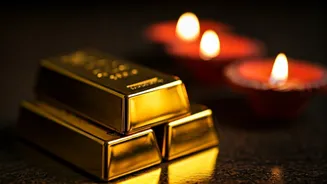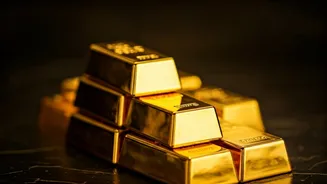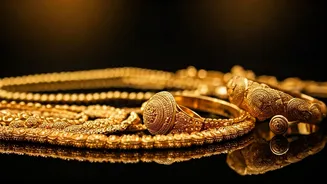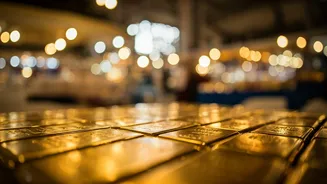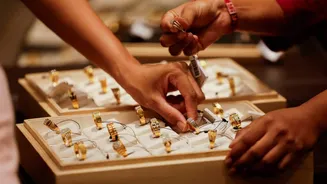Festive Gold Rush
The demand for gold in India is intrinsically linked to festivals, especially Dhanteras and Diwali. These celebrations are considered auspicious times
for purchasing gold, a tradition deeply embedded in Indian culture. People view gold as a symbol of prosperity and good fortune, making it a preferred investment during these festive periods. The anticipation of these festivals often fuels buying sprees, which significantly affect the market. It is common to see extended hours and crowded jewellery stores during these periods as customers are eager to make their purchases. The emotional significance combined with the belief in gold’s lasting value drives the high demand during Dhanteras and Diwali. This increased demand also causes gold prices to fluctuate depending on the prevailing market conditions.
Premiums at Record High
The elevated demand during Dhanteras and Diwali not only increased sales but also pushed gold price premiums to their highest point in over a decade. Premiums represent the extra amount buyers pay over the international benchmark price of gold. The stronger the demand, the more likely the premiums are to rise, especially when supply is unable to keep up. Factors contributing to these high premiums include a combination of robust local demand, potential supply chain issues, and fluctuating currency rates. This situation reflects the strong desire of Indian consumers to acquire gold during the festive period, and the market response to meet this increased interest. The premiums indicate the perceived value of gold in India, making it a sought-after commodity despite the higher costs.
Cultural Significance Explained
Gold holds a special place in Indian culture and is often linked to religious and social customs. Dhanteras marks the beginning of the Diwali festival, where buying gold is considered a harbinger of wealth and good luck. Diwali itself is a festival of lights, and gold is frequently gifted and exchanged, symbolizing prosperity. Gold is also traditionally seen as a safe haven asset and an insurance policy against economic uncertainty. It has intrinsic value and is seen as an important component of a family’s wealth. Weddings are another major driver for gold demand, as gold jewellery is an essential part of the bride's trousseau and a traditional gift. These combined cultural factors make gold a central part of the Indian lifestyle, especially during festive times.
Market Dynamics Impact
The impact of Dhanteras and Diwali on the gold market is multifaceted, driving up both demand and influencing prices. The surge in buying prompts jewellers to stock up, often leading to increased imports. The higher premiums also show that the gold supply chain is under pressure, as dealers try to fulfill the needs of customers during this peak period. Furthermore, the performance of the gold market during these periods is a key indicator of consumer confidence and the overall economic health of India. The demand has a ripple effect, impacting not just retail prices but also contributing to the volatility in gold futures. Consequently, market analysts closely observe the gold market performance during these festivals to gauge broader market trends. The strong demand can influence investment decisions and trading strategies.
Economic Implications Noted
The high demand for gold during festivals has significant economic implications. Increased gold purchases contribute to the country's import bill, which can impact the current account deficit. The price premiums reflect a strong economy, but higher gold prices can also have inflationary effects. Increased gold spending can divert money away from other sectors, influencing broader economic trends. However, gold demand also boosts the jewellery industry, supporting jobs and business growth. Moreover, the demand boosts the revenue of retailers, manufacturers, and related businesses. The market activity around Dhanteras and Diwali serves as a barometer of the state of the Indian economy, signaling consumer sentiment and the financial health of the nation.


